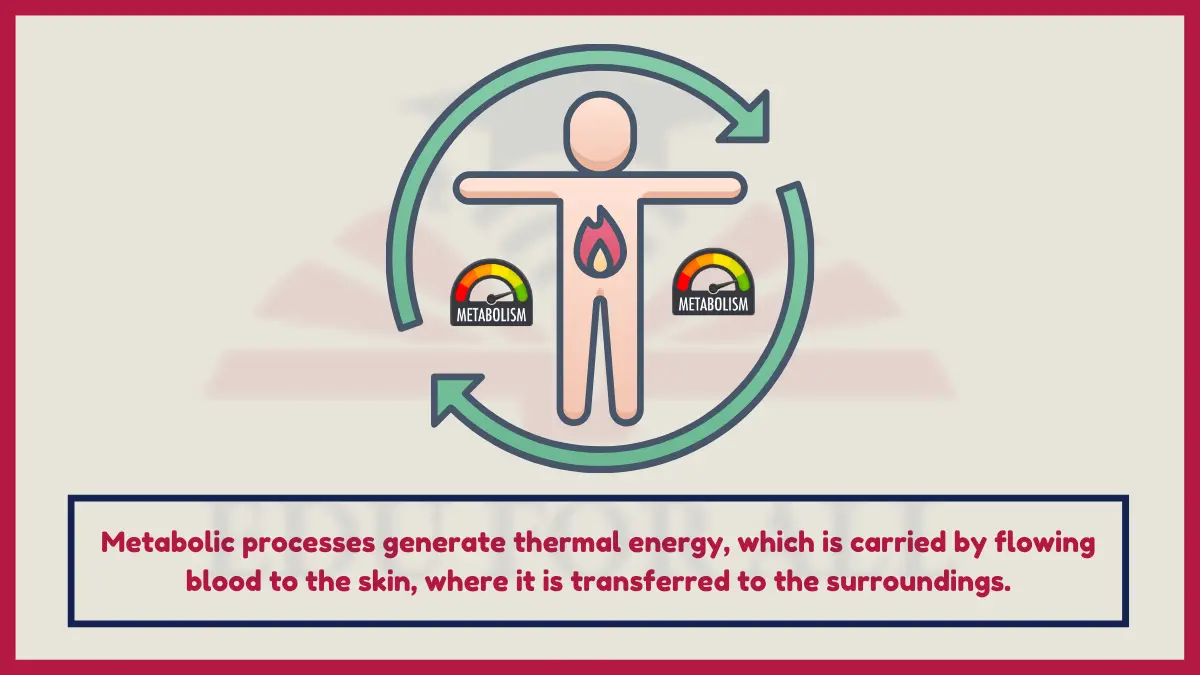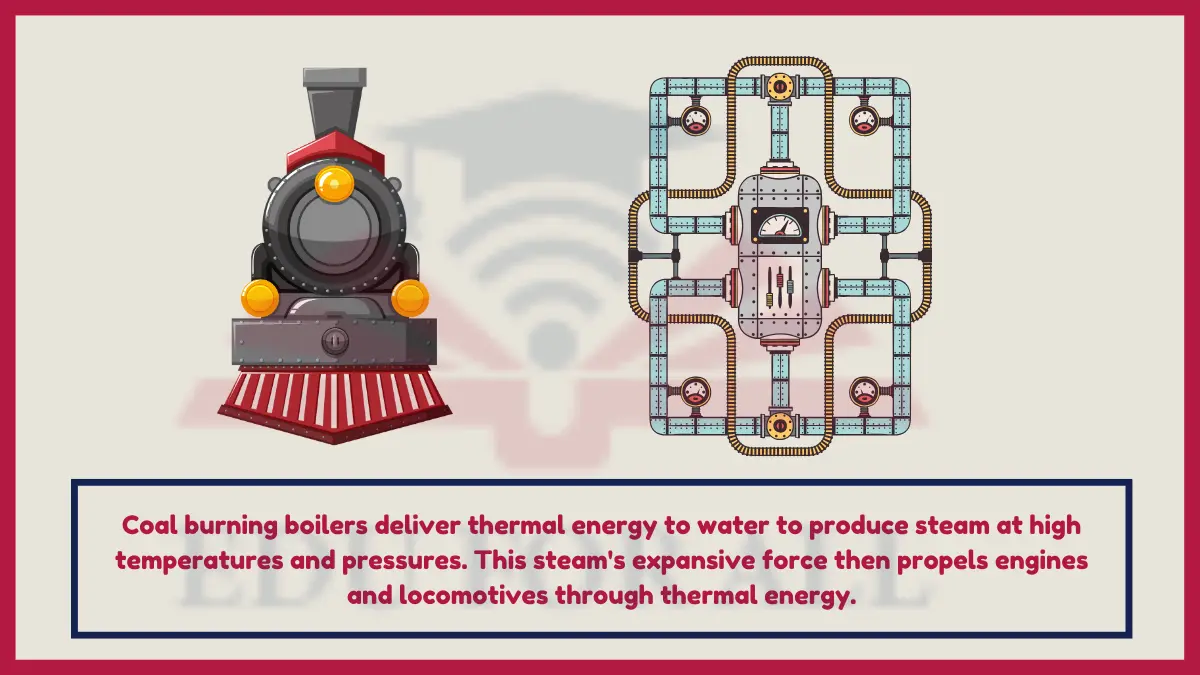Cooking on stovetops, combustion in car engines, and steam boiling to spin turbines constitute everyday examples of thermal energy in action. The warmth from space heaters, body heat from metabolism, and hot beverages cooling demonstrate heat transference forms. Deserts absorbing sunlight, fireplaces emitting infrared, and compost piles releasing decompositional energy further exemplify thermal sources that utilize or discard warmth.
Examples of Thermal Energy
Here are the 10 real-life examples of thermal energy:
1. Cooking on Stovetop
When you boil water in a kettle or cook food in a pan on a stovetop, the heating element provides thermal energy to the water or food. This thermal energy from the heat source causes the molecules to move faster and the temperature to rise.

Do You Know?
Over 70% of households worldwide rely on stovetops as their primary cooking appliances.
Experiment: Students can boil water in an uncovered pot and pan on a stove. Uses an infrared thermometer to measure and compare how efficiently heat gets transferred to the water vs the metal.
2. Car Engines
In a gasoline car engine, the explosions of the air/fuel mixture unleashes energy in the form of heat. This thermal energy converts into kinetic energy that spins the crankshaft to move the vehicle. Thermal energy propels the car.

Do You Know?
Only 12-30% of the thermal energy is converted into mechanical work in a gas-powered vehicle engine.
Experiment: You can build a mini steam engine model using a soda can heated by a candle with attached rotating fan/turbine blades that will spin from the escaping steam.
3. Space Heaters
Space heaters warm up a room by emitting thermal radiation from electric heating elements. The radiant heat transfers its thermal energy into objects it strikes like people and furniture, increasing their molecules’ vibration and the room temperature.

Do You Know?
Over 80% of US households use supplemental room heaters.
Experiment: You should set up two identical thermometers equidistant from a small space heater, with one shielded by an object. Monitor how the unshielded one heats faster to see the effects of radiant heat transfer.
4. Body Heat
Our bodies generate heat internally as a byproduct of metabolic processes that create thermal energy. The flowing blood carries this warmth from internal organs to the skin where heat transfers to the surroundings.

Do You Know?
The average person produces as much heat as a 100 watt lightbulb.
Experiment: You can exercise vigorously then use an infrared thermometer to map the surface heat signature of your cheeks before and after to detect the additional body warmth from your metabolic thermal energy generation.
5. Steam Engines
Coal burning boilers in steam engines deliver thermal energy to water to produce steam at high temperatures and pressures. This steam’s expansive force then propels engines and locomotives through thermal energy.

Do You Know?
The first steam locomotives hit top speeds of over 160 kph.
Experiment: You can construct a mini model of steam-based piston or turbine by igniting a candle to heat a tin can of water with attached spinning fan blades. Observe the candle’s thermal energy transform into steam’s expansive kinetic energy.
6. Clothes Irons
Heating elements in modern electric irons transfer thermal energy to the metal base plate to generate enough heat to straighten garment wrinkles. The metal component then conducts this warmth to smooth the fabric.

Do You Know?
Standard irons reach temperatures between 180 to 220 degrees Celsius.
7. Hot Beverages
Your morning coffee or tea contains thermal energy from heated liquid that slowly dissipates into the cup and surroundings through radiation and air contact as the drink cools.

Do You Know?
People began regularly consuming hot tea and coffee just 400-500 years ago.
Experiment: You can prepare hot tea then use a probe thermometer to generate a time vs temperature cooling curve by plotting the dissipating thermal energy as the drink equilibrates.
8. Desert Climate
Dry deserts absorb a high percentage of sunlight as thermal energy due to direct exposure and less evaporative cooling. This makes desert heat a primary example of thermal energy input on global scales.

Do You Know?
Desert surface temperatures can exceed 70 degrees Celsius.
Experiment: You should illuminate one soil sample with a heat lamp while another is shaded, then track the faster temperature rise in the heated one using two thermometers to mimic desert thermal extremes.
9. Fireplaces and Candles
Burning wood or wax produces flames that give off thermal energy that warms people and rooms near the fires through convection currents and infrared radiation from the heat.

Do You Know?
The first fireplaces were created about 390,000 years ago.
Experiment: You can hold each palm equidistant at either side of a candle flame, feeling direct warmth mainly on one side to exemplify fire’s directional and radial heat aspects.
10. Composting Organic Matter
The bacterial breakdown of leaf litter, manure, and other composting organic matter releases stored chemical energy as rising heat. The byproduct is a nutrient-rich fertilizer and useful thermal energy discharge.

Do You Know?
Industrial composting can reach temperatures greater than 55 degrees Celsius.
Experiment: You can hold each palm equidistant at either side of a candle flame, feeling direct warmth mainly on one side to exemplify fire’s directional and radial heat aspects.
Also Read:

